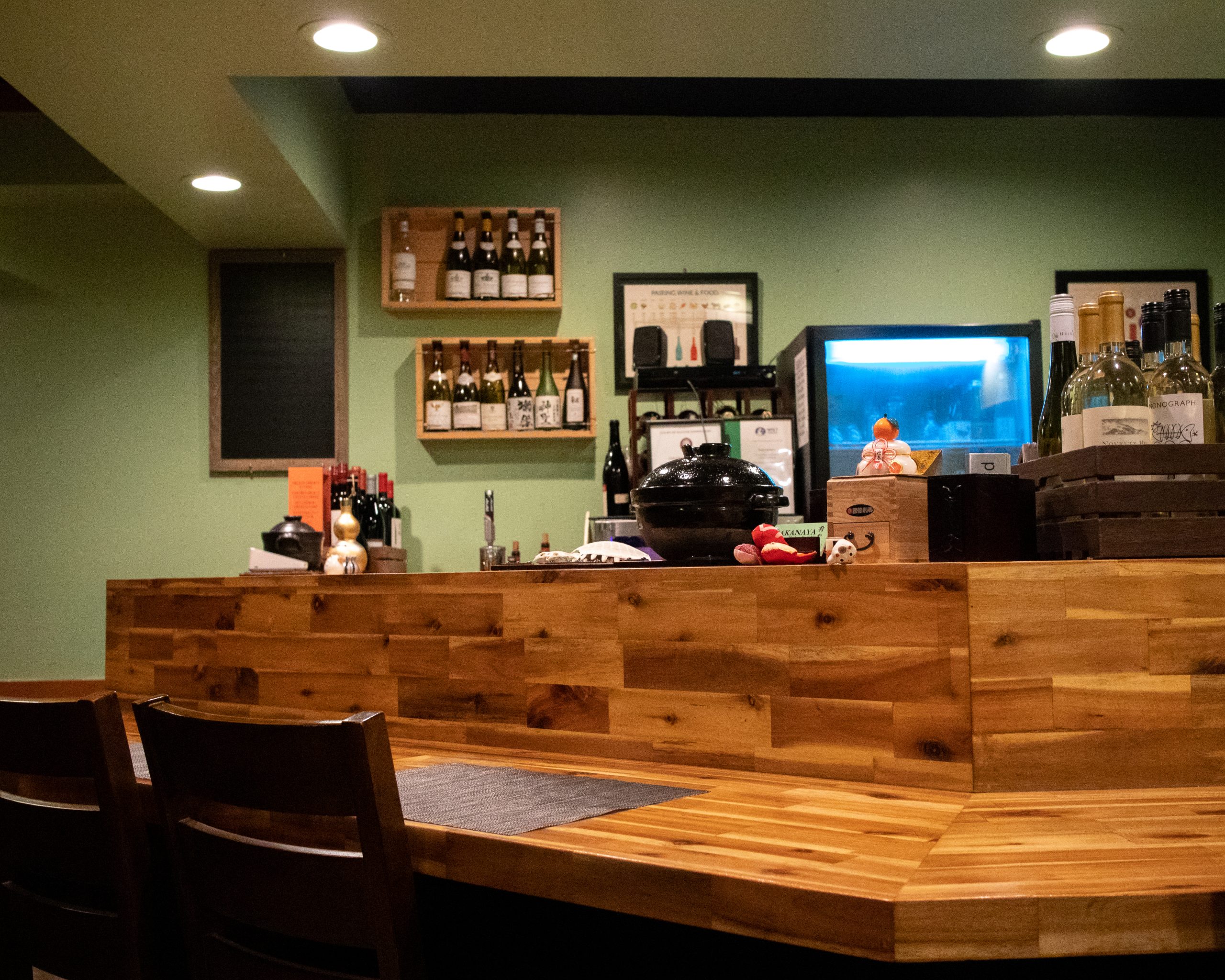
One of the most enduring themes of Japanese culture is something called “monozukuri”, the pursuit of beauty through simplicity and dedication of purpose. This is reflected everywhere, from the artisan who dedicates their life to creating the ideally proportioned ceramic bowl, to the humble chef who spends his career trying to find a way to get just a bit more umami from his dashi.

Nestled in a small strip mall in Costa Mesa, Sakanaya is a beacon for this old notion of “monozukuri”. Like many businesses in Japan, the restaurant is a small affair – run by chef Tatsuya and his wife, an accredited sommelier. With four tables and a small bar, the setting is intimate and normally filled with regulars and those quietly “in the know”. It is quite comfortably a hole in the wall.

Japanese Kaiseki Menu
Sakanaya has two menu options. The first is a traditional Japanese kaiseki, which seeks out the freshest ingredients at peak seasonality to bring out their full flavor potential. Preparations are often subtle, allowing the quality of the ingredients to really shine through. This is a prix fixe set of courses that is artfully structured to create a sonata. A slighty bright and acidic course might start the meal to open your palate, only to be followed by a delicately broiled fish. On the first bite, you might even notice that the lingering acidity from that first course matches perfectly with the smoky herbaceousness of the fish.
A Japanese kaiseki is as much a journey of the senses as a meal. It will often include a few appetizers (some examples include steamed crab cake, okinawan sea grapes, gooseneck barnacles, and kushi oyster). This is followed by sashimi, a cooked fish course, takikomi gohan, A5 wagyu, tempura, and a dessert. We’ve yet to try their premium kaiseki, which requires a one week notice for them to source very specialized ingredients.
A La Carte Menu
The second menu option is a la carte and more of what you would expect from usual Japanese washoku. Their menu is constantly changing according to seasonality, but some of the standouts from our last visit were:

Takikomi Gohan
This is also known as claypot rice. Peak quality koshihikari rice infused with complementary flavors. Sweet snow crab legs against salty ikura. Buttery scallop against earthy asparagus.

Grilled Jidori Chicken with Spicy Miso
Their homemade umami packed miso is paired with a sweet plum sauce that adds just a bit of tang. The skin is crisp and slightly caramelized, while the meat is succulent to the point where I actually needed to take a break while writing this to bask in the memory of that single dish.

Kurobata Pork Tonkatsu
I’m not sure how Tatsuya-san manages to make the batter so delicately crisp while also minimizing the presence of oil.

Assorted Sashimi
A wide variety of fish you don’t commonly see in most American sushi restaurants. The uni is appropriately sweet with a refreshing brine. The jellyfish is expertly cut to avoid any rubberiness. The toro impressed as always with its rich decadence.

Caramelized Apple Crème Brulee
I actually tried to order a second one of these, but it turned out that I was given the last one. The apples were expertly caramelized while still maintaining a slight bite, preventing them from devolving into the mushiness often associated with anything apple baked.

All that said, we’ve been to Sakanaya over a dozen times and have had over a dozen different experiences. The constantly evolving menu and chef Tatsuya’s drive for perfection really makes each meal exceptional. We will definitely be back again.

Know Before Your Visit
Price Range:
- Standard Kaiseki Omakase $150pp
- Premium Kaiseki Omakase $250pp
- A La Carte $50pp on average
Make reservations ahead of time, preferably 48 hours prior for groups of 5 or more. Visit their website for more information.
If you liked this post and want to explore other dinner options similar to the modern Japanese Kaiseki style, check out Hana Re in Costa Mesa and Omakase by Gino in Santa Ana.



